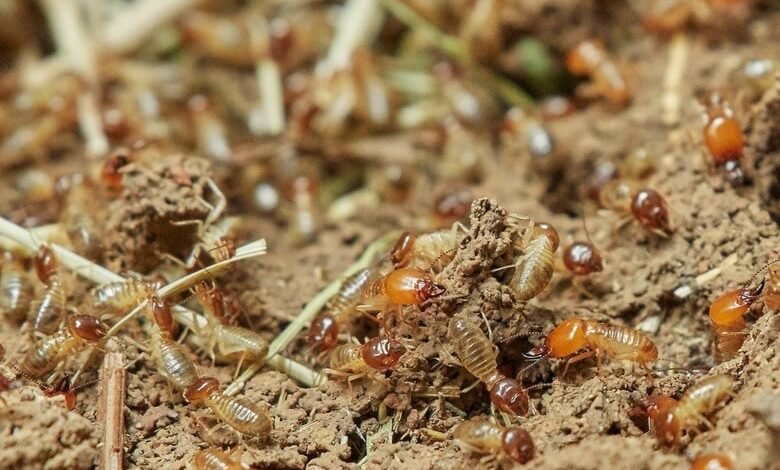Termites vs Ants: How to Tell the Difference

You’re enjoying a glass of wine or iced tea or a cold brew on your back porch when you swoop a glance out into the yard. You notice something black and moving, scurrying side to side. A subdural gnawing in your soul tells you this isn’t a squirrel or chipmunk.
So what is it? Termites? Probably not.
Termites vs ants can be challenging to tell apart. Luckily, we’ve compiled a helpful guide that will have you telling termites and ants apart in no time.
Differentiating Common Traits
Differentiating common traits between termites and ants can be difficult. This is because they share many common physical attributes and biological implications.
Termites have straight antennae and a broad waist. In comparison, ants have curved antennae and a constricted waist.
Termites have four wings that are of equal size, while ants have two larger wings in front and two smaller wings at the back. Additionally, the mouth parts of a termite are designed for eating wood, while ants are equipped for chewing food.
In terms of behavior, ants typically forage for food and live in colonies. Whereas termites mainly feed on wood and live in social systems with a queen at the helm.
Furthermore, termite wings are shed after mating and discarded near their nests. In contrast, ants keep their wings until their entire life cycle is complete. All in all, when trying to spot the difference between termites and ants, take a closer look at their physical features.
Habits and Nest Structures
When taking a closer look at the habits and nest structures of termites and ants, it is possible to tell the difference between the two. Most ants only have one colony with one queen, but termites usually have more than one colony with more than one queen.
Termites also live in the dark, enclosed soil, and mud tunnels, while ant nests tend to be much more exposed, made up of small chambers and tunnels.
Additionally, ants construct their nests in and around walls, tree stumps, and plants. Termites form their nests entirely underground, usually located within the base or stem of a tree.
Lastly, ants prefer areas where there is plenty of moisture and food sources. In contrast, termites seek out areas with higher levels of dryness, such as wood and other cellulose material, for their food source.
Tips on Controlling Termite and Ant Infestations
Knowing how to identify the difference between ants vs termites is important when it comes to controlling the infestation. For instance, the different treatments will vary depending on the species.
Termite treatment often includes a combination of liquid and soil treatments, monitoring systems such as bait stations, and possible home modifications.
Your termite control specialist can devise a combination of solutions that work best for your unique situation. On the other hand, ant infestations can often be managed by creating ant-proof barriers, using baits and pesticides, or reducing access to food, water, and shelter around the home or workplace.
Explore the Differences Between Termites vs Ants
The best way to tell termites vs ants is to look at the shapes of their bodies, wings, and antennae, as well as their diets and habitats. Termites and ants may look alike, but the differences can be easily spotted with the right observations.
To learn more about termites and ants and how to best protect your home from them, contact a local pest control operator today.
For more informative topics, check out the rest of our site.






